Sensor Sweep: Sonic Adventure, L. Sprague de Camp, John Buscema, Star Wars Holiday Special
Monday , 1, January 2024 Sensor Sweep Leave a commentReading (Free Beacon): My first vague inklings of sexuality came from![]() Robert E. Howard’s Conan books—but, then, my first creeping sense of a malevolent supernatural, like a gateway drug for H.P. Lovecraft, came from those Conan stories, too. Edgar Rice Burroughs’s Tarzan of the Apes, Arthur Conan Doyle’s The Lost World: a dive into the genre of lost primitivism that began with Rudyard Kipling’s Mowgli in the first Jungle Book.
Robert E. Howard’s Conan books—but, then, my first creeping sense of a malevolent supernatural, like a gateway drug for H.P. Lovecraft, came from those Conan stories, too. Edgar Rice Burroughs’s Tarzan of the Apes, Arthur Conan Doyle’s The Lost World: a dive into the genre of lost primitivism that began with Rudyard Kipling’s Mowgli in the first Jungle Book.
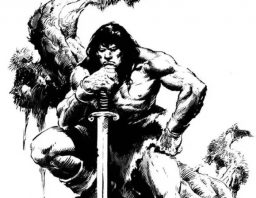 Comic Books (Dark Worlds Quarterly): In Savage Sword of Conan – The Original Marvel Years Omnibus v01 (2019), Roy Thomas tells how John Buscema did not like Alfred Alcala’s incredible inking of his pencils. This stunned me. I LOVE Alcala’s work on SSOC. I had heard somewhere else (I don’t recall where but also according to Roy Thomas) that Big John did not care for Ernie Chan’s inking either!
Comic Books (Dark Worlds Quarterly): In Savage Sword of Conan – The Original Marvel Years Omnibus v01 (2019), Roy Thomas tells how John Buscema did not like Alfred Alcala’s incredible inking of his pencils. This stunned me. I LOVE Alcala’s work on SSOC. I had heard somewhere else (I don’t recall where but also according to Roy Thomas) that Big John did not care for Ernie Chan’s inking either!
Fiction (Goodman Games): Did you know that L. Sprague de Camp coined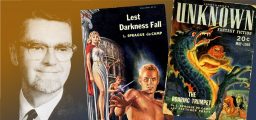 the terms “extraterrestrial” and “E.T.”? It’s true! While the noun existed before de Camp, he was the first to use it to describe alien life in a 1939 article for Astounding Science Fiction. This is one of many examples of how De Camp’s impact on the genres of science fiction and fantasy far exceed his level of contemporary fame.
the terms “extraterrestrial” and “E.T.”? It’s true! While the noun existed before de Camp, he was the first to use it to describe alien life in a 1939 article for Astounding Science Fiction. This is one of many examples of how De Camp’s impact on the genres of science fiction and fantasy far exceed his level of contemporary fame.
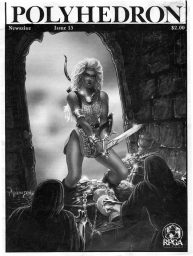 Magazines (Grognardia): Could the cover of issue #15 of Polyhedron (December 1983) by Keith Parkinson be any more 1980s if it tried? Like most recent issues, the illustration depicts a character from the “Encounters” feature, in this case an 8th-level Dungeons & Dragons fighter named Edrie Solo. Edrie is the player character of Randy Solo.
Magazines (Grognardia): Could the cover of issue #15 of Polyhedron (December 1983) by Keith Parkinson be any more 1980s if it tried? Like most recent issues, the illustration depicts a character from the “Encounters” feature, in this case an 8th-level Dungeons & Dragons fighter named Edrie Solo. Edrie is the player character of Randy Solo.
H. P. Lovecraft (SF Crows Nest): Before he published his fiction in the amateur press, H.P. Lovecraft wrote his own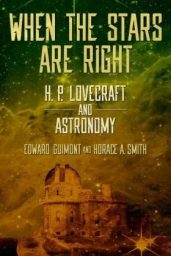 astronomy journal and had pieces published in local newspapers. Although he never received much formal education in science, he never lost his interest in astronomy, and his fiction, particularly his later works, is suffused with an appreciation for the scale and majesty of the cosmos. This appreciation takes many forms. ‘When The Stars Are Right’ guides the reader through Lovecraft’s career, starting from his youthful studies of the night sky with a small telescope, all the way through to his largely negative speculations on alien life.
astronomy journal and had pieces published in local newspapers. Although he never received much formal education in science, he never lost his interest in astronomy, and his fiction, particularly his later works, is suffused with an appreciation for the scale and majesty of the cosmos. This appreciation takes many forms. ‘When The Stars Are Right’ guides the reader through Lovecraft’s career, starting from his youthful studies of the night sky with a small telescope, all the way through to his largely negative speculations on alien life.
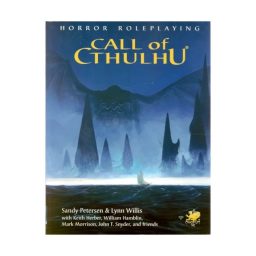 Games (Walker’s Retreat): If your clubhouse only has room for a handful of games to do campaigns with, then you can guess what I recommend:
Games (Walker’s Retreat): If your clubhouse only has room for a handful of games to do campaigns with, then you can guess what I recommend:
- Advanced Dungeons & Dragons 1st Edition
- Classic Traveller
- Gamma World 1st Edition
Given the proven strength of the older games, it should be no surprise what I recommend for those wanting Horror.
Pulp (Paperback Warrior): I’ve recently become enamored with the writings of Arthur D. Howden Smith (1887-1945), particularly his glossy magazine stories. His offering “Pirate’s Lair”, published in the October 1933 issue of Blue Book, was mesmerizing as a highly-charged revenge yarn on the high seas. Thumbing through more back issues of Blue Book, I found his August 1937 novella The Island Monster and had to read it.
writings of Arthur D. Howden Smith (1887-1945), particularly his glossy magazine stories. His offering “Pirate’s Lair”, published in the October 1933 issue of Blue Book, was mesmerizing as a highly-charged revenge yarn on the high seas. Thumbing through more back issues of Blue Book, I found his August 1937 novella The Island Monster and had to read it.
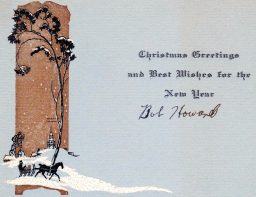 Robert E. Howard (DMR Books): The Christmas card below is a precious relic for a couple of reasons. One is that Robert E. Howard rarely wrote out his signature, usually typing it instead. Apparently, this was because Bob held his calligraphy in slight regard. The other reason is that this card—to my knowledge—is the only REH Christmas card in existence.
Robert E. Howard (DMR Books): The Christmas card below is a precious relic for a couple of reasons. One is that Robert E. Howard rarely wrote out his signature, usually typing it instead. Apparently, this was because Bob held his calligraphy in slight regard. The other reason is that this card—to my knowledge—is the only REH Christmas card in existence.
Ghost Stories (Paperback Warrior): Did you know that the Christmas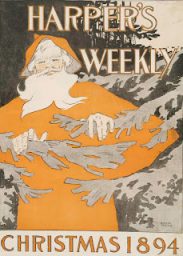 season not only brings glad tidings, but also ghost stories? Sure, the easy nod here goes to the ultimate Christmas ghost story, Charles Dickens’ 1842 classic A Christmas Carol. But, references to the Christmas ghost can be dated as far back as 1730 with Round about Our Coal-Fire (aka Christmas Entertainments).
season not only brings glad tidings, but also ghost stories? Sure, the easy nod here goes to the ultimate Christmas ghost story, Charles Dickens’ 1842 classic A Christmas Carol. But, references to the Christmas ghost can be dated as far back as 1730 with Round about Our Coal-Fire (aka Christmas Entertainments).
Blogging (Silver Key): Most popular posts of 2023 1. 1979 Ken Kelly heroic fantasy calendar, month-by-month (231 views). We lost Kelly in 2022, and I covered his passing last year. But in June I gained a terrific Kelly keepsake, a mint condition 1979 calendar purchased at Robert E. Howard Days. It’s now hanging on my wall. The artwork is stunning.
Art (Dark Worlds Quarterly): Pin-ups (or mere filler) aren’t unique to Sword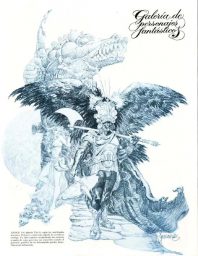 & Sorcery’s most famous magazine, Marvel’s Savage Sword of Conan. That black&white publication offered multiple portfolios and single illustrations as inside covers or five page fillers. As a young reader/artist, I loved them. And calling them “mere filler” is a tad naive. Red Sonja got her metal bikini because of one of those “mere fillers”.
& Sorcery’s most famous magazine, Marvel’s Savage Sword of Conan. That black&white publication offered multiple portfolios and single illustrations as inside covers or five page fillers. As a young reader/artist, I loved them. And calling them “mere filler” is a tad naive. Red Sonja got her metal bikini because of one of those “mere fillers”.
Cinema (Robot Head): Godzilla Minus One is a love letter to men. And it also has a really big lizard.
 Cinema (Kairos): Since we’re in the Christmas season, I thought it fitting to give my regular readers a peek behind the VIP curtain. Please enjoy my previously Neopatron exclusive review of the John Hughes classic Uncle Buck.
Cinema (Kairos): Since we’re in the Christmas season, I thought it fitting to give my regular readers a peek behind the VIP curtain. Please enjoy my previously Neopatron exclusive review of the John Hughes classic Uncle Buck.
Star Wars (Black Gate): Two movies (actually both are television specials)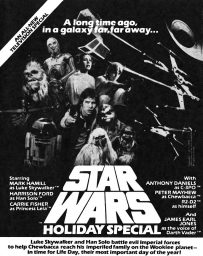 quickly became the candy-striped centerpieces of our masochistic rite: the Star Wars Holiday Special and Rich Little’s Christmas Carol. The fetid, festering mass of videotape known as the Star Wars Holiday Special oozed onto television screens across the nation on the evening of November 17th, 1978.
quickly became the candy-striped centerpieces of our masochistic rite: the Star Wars Holiday Special and Rich Little’s Christmas Carol. The fetid, festering mass of videotape known as the Star Wars Holiday Special oozed onto television screens across the nation on the evening of November 17th, 1978.
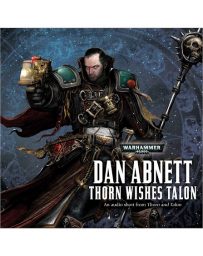 War Hammer (Lord Samper’s Library): So the Audible subscription crept up and surprised me again but that’s ok. I’ve been enjoying going back and listening to some older Warhammer 40K audiobooks which are proving to be just as good at getting me through the commute as they were back in the day.
War Hammer (Lord Samper’s Library): So the Audible subscription crept up and surprised me again but that’s ok. I’ve been enjoying going back and listening to some older Warhammer 40K audiobooks which are proving to be just as good at getting me through the commute as they were back in the day.
Authors (DMR Books): December 26 has rolled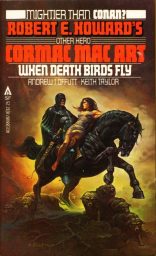 around again, and that means it’s time for the DMR Books Blog’s birthday post devoted to Keith Taylor. I contacted Keith at his abode Down Under. He was caught betwixt a wedding and Christmas festivities, but he graciously made time to answer some questions from yours truly. We discussed the distant past, the exciting present and what things may come in the future.
around again, and that means it’s time for the DMR Books Blog’s birthday post devoted to Keith Taylor. I contacted Keith at his abode Down Under. He was caught betwixt a wedding and Christmas festivities, but he graciously made time to answer some questions from yours truly. We discussed the distant past, the exciting present and what things may come in the future.
Streaming (Nerdrotic): Rebel Moon is a SPECTACULAR waste of time.
 Gaming (Essential Malady): Sonic the Hedgehog didn’t have the successful transition into 3D that the Super Mario Bros. series did. While Super Mario 64 set the standard and remains a fun and engaging game to this day, the same can not be said of most of Sonic’s 3D outings. This is not to say they are all terrible, as the original Sonic Adventure and it’s sequel are well-regarded by many.
Gaming (Essential Malady): Sonic the Hedgehog didn’t have the successful transition into 3D that the Super Mario Bros. series did. While Super Mario 64 set the standard and remains a fun and engaging game to this day, the same can not be said of most of Sonic’s 3D outings. This is not to say they are all terrible, as the original Sonic Adventure and it’s sequel are well-regarded by many.
Writing (Monsters and Manuals): A lot of the violence in Tolkien’s work happens “off camera”, so to speak, or is described in very broad brush strokes. Even when we get a “live” account, as in the scene above, it tends to be a sketch or a few edited highlights – the only blow-by-blow fight we really get in The Lord of the Rings, at least as far as I can recall off the top of my head, is the scene just after this one when Frodo gets stabbed by the orc captain’s spear.
Science Fiction (Benespen): Foundation is a book that I haven’t read until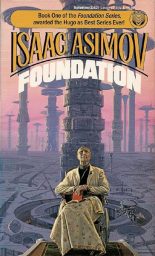 now. Given what I do at With Both Hands, it is good that I have read it, as I can now see that many other books I’ve read were responses to Foundation in the Great Conversation. If you want to play the game, you have to pay the price of entry.
now. Given what I do at With Both Hands, it is good that I have read it, as I can now see that many other books I’ve read were responses to Foundation in the Great Conversation. If you want to play the game, you have to pay the price of entry.
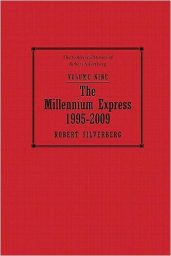 Science Fiction (Marzaat): Robert Silverberg and I go back a long way. The first science fiction novel I remember reading in grade school was his first novel, Revolt on Alpha C. Later, I read The Time of the Great Freeze. In junior high and high school, I would come across various anthologies he edited which had his work. I puzzled over the title story in his collection The Feast of St. Dionysius. When he returned to writing with Lord Valentine’s Castle, I read his work in Omni and various other magazines.
Science Fiction (Marzaat): Robert Silverberg and I go back a long way. The first science fiction novel I remember reading in grade school was his first novel, Revolt on Alpha C. Later, I read The Time of the Great Freeze. In junior high and high school, I would come across various anthologies he edited which had his work. I puzzled over the title story in his collection The Feast of St. Dionysius. When he returned to writing with Lord Valentine’s Castle, I read his work in Omni and various other magazines.
Pulp (Pulpfest): What’s up for PulpFest 2024? Back in the early 1930s, with the Great Depression in full tilt, things were tough for America and the pulp magazine industry. Clayton — the publisher of Ace-High, Astounding Stories, Clues, Ranch Romances, Strange Tales, and other memorable pulps had gone belly up in 1932. Fiction House was slowly emerging from its publishing suspension, following the death of its co-founder Jack Kelly. Other companies were on shaky ground.
Firearms (Frontier Partisans): One of our favorite topics around here is the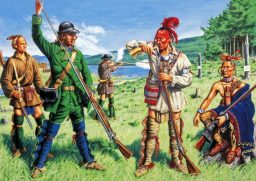 use of smoothbores on the frontier. We’ve established that the smoothbore was the primary arm for Frontier Partisans up into the 1760s, and remained a go-to combat arm well into the 19th Century.
use of smoothbores on the frontier. We’ve established that the smoothbore was the primary arm for Frontier Partisans up into the 1760s, and remained a go-to combat arm well into the 19th Century.
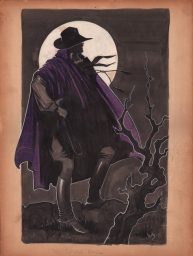 Art (DMR Books): Wallace [Smith] was one of the finest artists in the newspapers business and switched back and forth between cartooning and writing. He became Washington correspondent for the Chicago American at the age of 20, remaining with that newspaper for over a decade. According to the book The Madhouse on Madison Street, Smith was “one of the most colorful reporters who ever worked for the Hearst papers,” and was born with the last name of Schmidt, which he changed to Smith during World War I.
Art (DMR Books): Wallace [Smith] was one of the finest artists in the newspapers business and switched back and forth between cartooning and writing. He became Washington correspondent for the Chicago American at the age of 20, remaining with that newspaper for over a decade. According to the book The Madhouse on Madison Street, Smith was “one of the most colorful reporters who ever worked for the Hearst papers,” and was born with the last name of Schmidt, which he changed to Smith during World War I.
Please give us your valuable comment